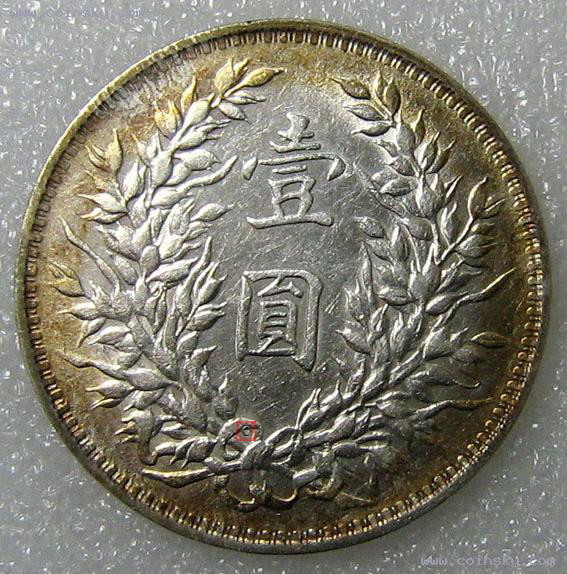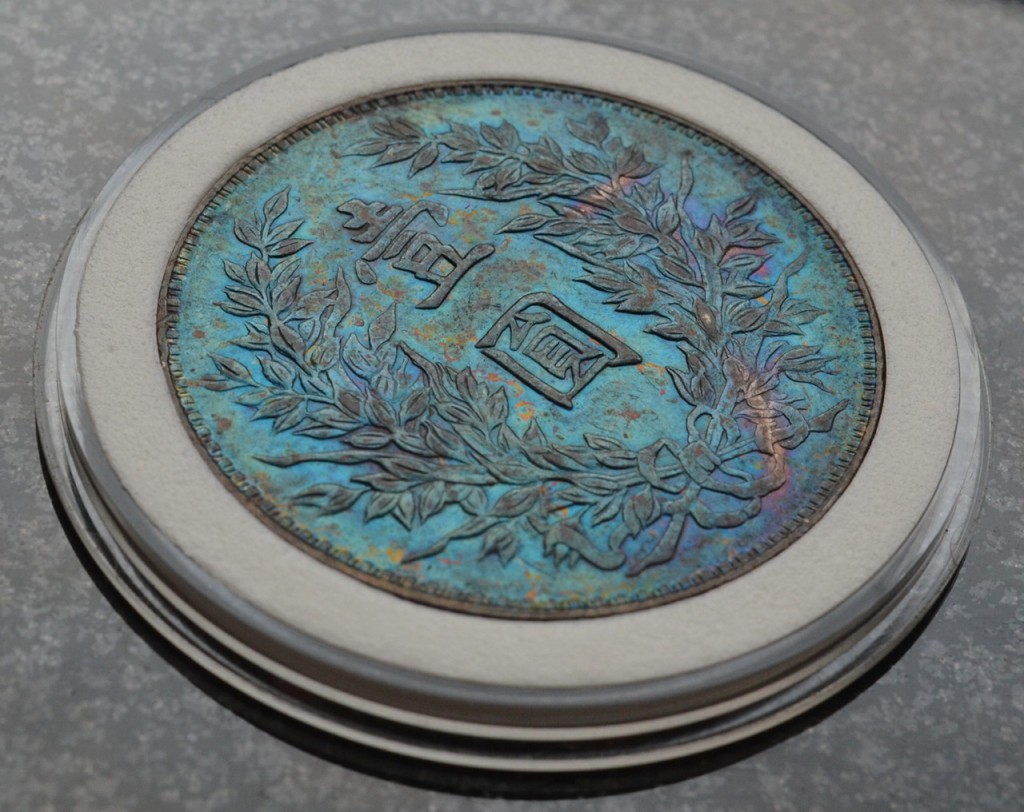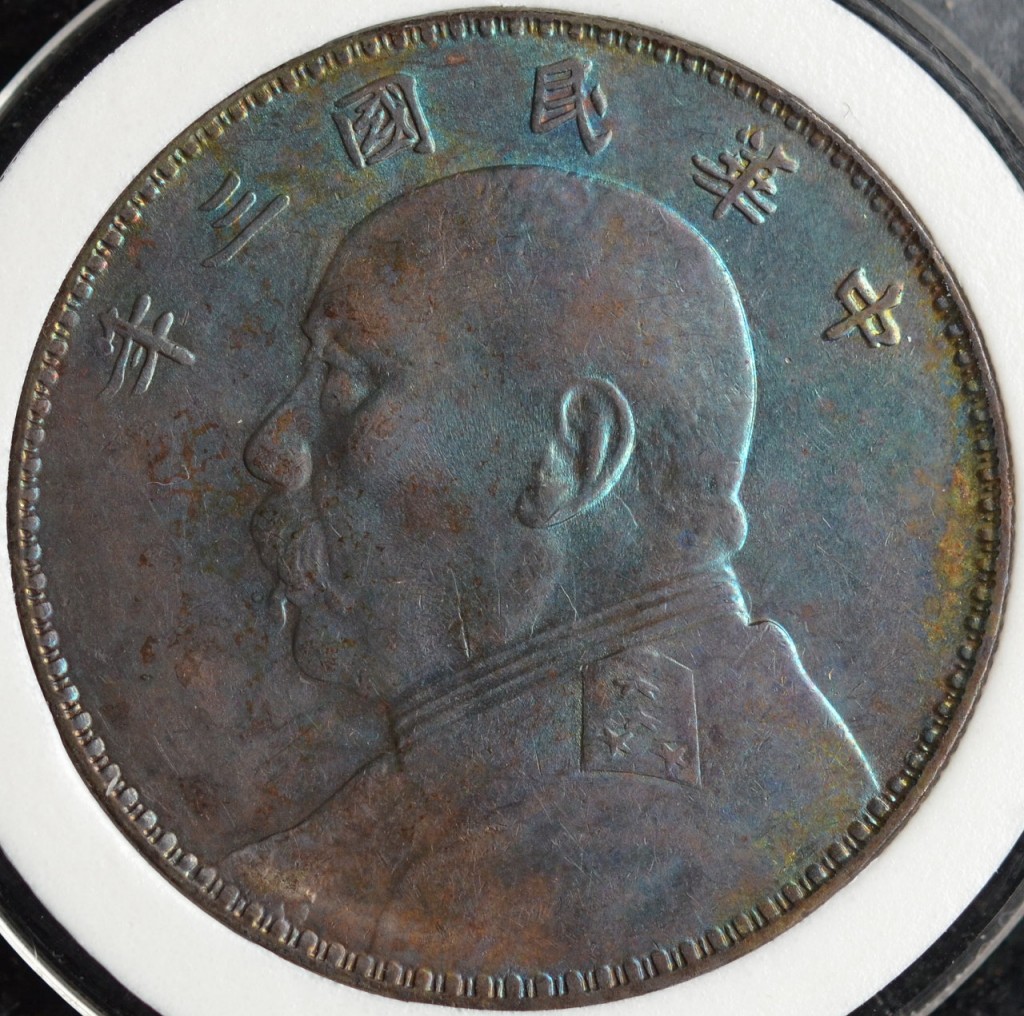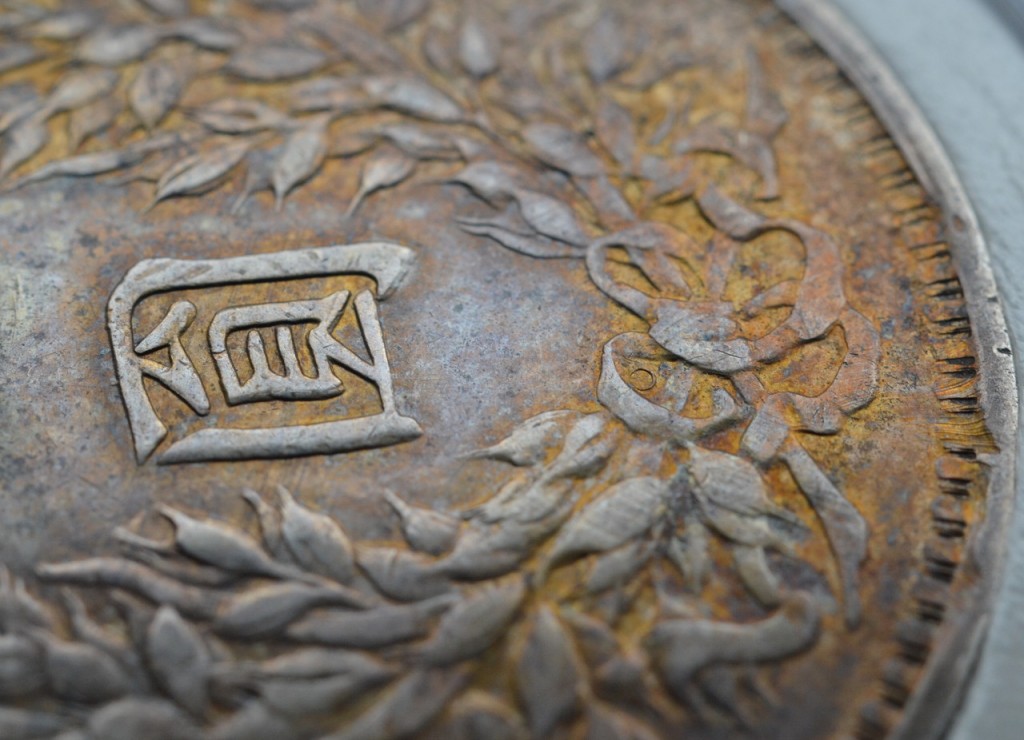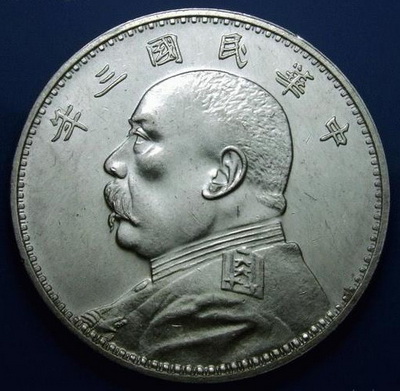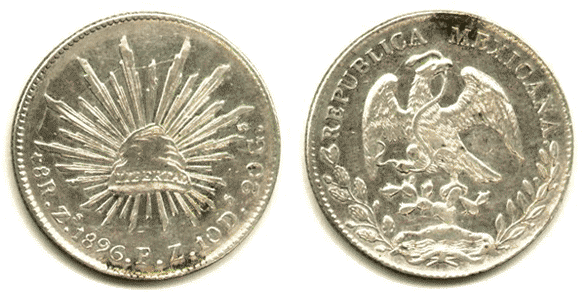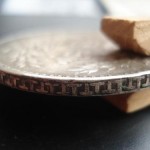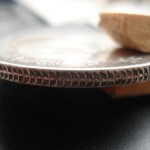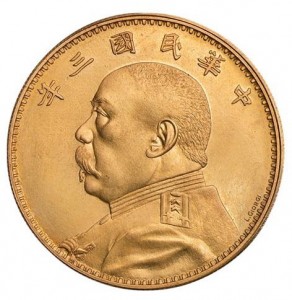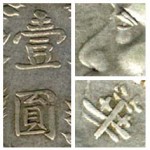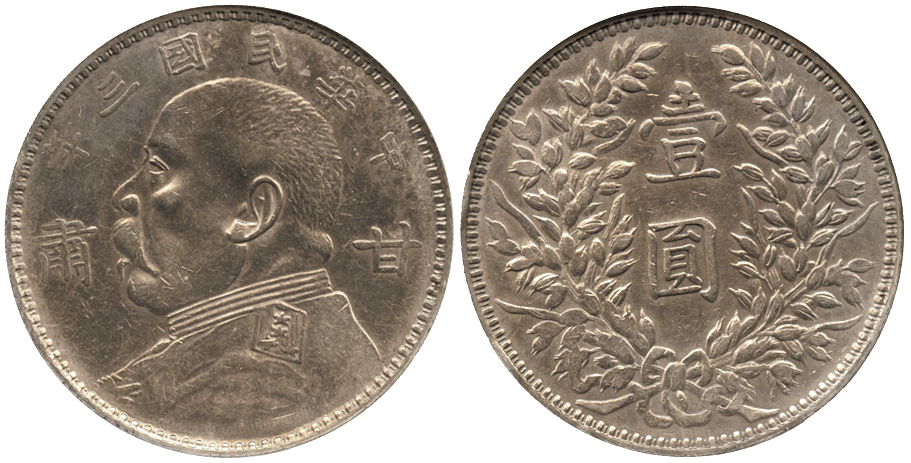Die Variations: the 1914 Yuan Shi Kai Dollar (3rd Year of the Republic of China)
The Yuan Shi Kai dollar (or “fatman dollar“) is a very common coin. Liang Shi Yi (梁士诒), the former mint master of the Central Mint in Tianjin, remembered that for the first 9 months of production, 300,000 silver dollars were minted every day. Provincial mints were issued official dies from the central governement, and the new dollars were consistently up to standards.
This standardisation, allied to favourable circumstances, allowed the new coinage to successfully replace the dragon dollars and foreign trade dollars still circulating at the time. However, with years passing, several interesting die variations of the original 1914 dollar appeared and found their way into circulation. The most popular of these types are the “O” mint mark (O版) and the triangular yuan (三角圆) varieties. There has been much speculation about the origin of these special coins, which remains incertain.
A popular theory is that the “O” mint mark (O版) coins were minted in Shenyang (沈阳) in 1951 under the supervision of the People’s Bank of China (中国人民银行), for the exclusive use of the population of the southern provinces and ethnic minorities, who didn’t trust the Renminbi (人民币) currency. Popular lore also says that the triangular yuan coins would have been minted in 1949 to pay workers building roads in Tibet.
While there is some truth in these theories, they comport some flaws. In 1949, the new government banned the private possession of gold and silver. Older silver coins were to be exchanged at the bank for the new currency, the Yuan Renminbi still in use nowadays. In 1951 the People’s Bank of China had already withdrawn enough silver dollars from circulation that it did not need to mint any new one; it could have simply used those already in its possession.
What about the supposed location of their production? Shenyang was taken by the People’s Liberation Army on November 2, 1948. On November 3, the North-Eastern Communist Bank of China (中共东北银行) took control of the mint, and on November 8, the Shenyang branch of the North-Eastern Provincial Bank (东北银行) was established. The mint was immediately tasked to start producing silver dollars, in order to avoid a currency shortage in the province. The old 1914 dies of the original Yuan Shi Kai dollars were dusted off and put back to use.
In the records of the Shenyang mint (沈阳造币厂志), page 169, it is noted that the mint had to repair the old dies, “correcting a character” (改正一字) and “fixing the epaulette” (改修肩章) of the Yuan Shi Kai portrait. This description matches closely the changes observed on the triangular yuan variety: the 圎 (Yuan) character has been modified, and indeed the epaulette on the shoulder of Yuan Shi Kai is sharply struck. However, there is no mention of adding the “O” mint mark in the records of the mint. The existence of the “O” mint mark + triangular yuan (O版三角圆) variety would thus imply that the “O” mark existed prior to 1949, and the type “O” dies were simply modified along the normal dies.
A supporting evidence is that the original edition of “Illustrated Catalog of Chinese Coins” by Eduard Kann (耿愛德), published in 1953, included the “O” mint mark type (Kann 648) but not the triangle yuan. He compiled this catalog for the 47 years he stayed in China, before he “had to leave China in a hurry” during the takeover by Mao Ze Dong in 1949. The 1954 edition of the book was amended to include, amongst other additions, the triangular yuan variety. This shows the coins bearing the “O” mint mark were in circulation well before 1949, and that the triangular yuan coins were made after 1949, as confirmed by the records of the Shenyang mint.
If we dig further into the past, we can see from the archives of the mint (沈阳造币厂大事记) that it first minted Yuan Shi Kai dollars (1915) and Hong Xian commemorative silver coins (1916) under the supervision of the Central Mint. However, the records indicate that the mint issued new coins on 3 occurrences after that. On July 26, 1919, Zhang Zuo Lin (张作霖 aka Chang Tso-lin, warlord of Manchuria) renamed the mint as “Fengtien Arsenal” (奉天军械厂制造科) and minted both Yuan Shi Kai dollars and imperial copper cash coins. On January 13, 1921 and June 15, 1926, Zhang Zuo Lin ordered again some Yuan Shi Kai dollars to be minted at Shenyang to redress the finances of his provinces, strained by the successive wars against the Zhili clique and the Guominjun.
It is quite likely that the “O” mint mark was added to the old official dies in June 1926. Manchuria economy was in decline, and Zhang Zuo Lin had just appointed a new civil governor in March whose sole function was to supply his army with large amounts of money. The Fengtien dollar, which was quickly losing value against the Japanese gold yen, was debased. It would have made lot of sense to add a distinctive mark to the newly issued, debased coins to easily distinguish them from older issues which were up to standard.
Even if the popular theories were not too wrong about the place and time of minting of these varieties, we see now that these had actually nothing to do with Southern provinces or ethnic minorities. Both were produced in Shenyang primarily as emergency currency to try and shore up the ailing economy of Manchuria in difficult times: the O版 in 1926, as Zhang Zuo Lin was bleeding the province dry to conquer Beijing, and the 三角圆 in 1949, to start rebuilding the economy at the end of the Civil War.
The Yuan Shi Kai silver dollar coin is one of the most commonly found Chinese silver dollar around the world, but paradoxically, there is few accurate information available about in English. Called 袁大头 in China (literaly “Yuan [Shi Kai] big head”), and “Fatman dollar” in the United States, this coin was designed to put an end to the chaotic state of the Chinese monetary system and further the political agenda of Yuan Shi Kai, who had just taken over the function of President of the newly born Republic of China.
Introduced for Christmas 1914, the Yuan Shi Kai silver dollar had a standardized purity (0.89000 silver) and weight (26.4000g, .7555 oz ASW). Like the previous central imperial issues, this new currency would have to compete against the chinese silver dollars already in circulation, foreign trade dollars, and resistance from provinces using primarily copper currency or paper money. The introduction of the Yuan Shi Kai dollar coincided with the withdrawal and melting of about 280 million dragon dollars. The remaining dragon dollars, whose fineness was not always up to the standard, could be exchanged free of charge for the new Yuan Shi Kai dollar in all Bank of China, Bank of Communications branches or official provincial banks.
These political measures helped the new currency to gain traction, but at the beginning of World War I, the Mexican dollar was still trading at a premium against chinese dollars, due to its use as a means of payment for exports. It is only after the War caused exports to plummet than the Yuan Shi Kai dollar was able to replace the Mexican dollar. The loss of the export markets also undermined the faith in the interprovincial paper money, which relied on external demand for local products, and caused the collapse of local copper currencies.
These economical factors contributed to the outstanding success of the Yuan Shi Kai dollar, which gradually penetrated even the most remote provinces of China. In 1924, a survey conducted by the Shanghai Bank found that of the estimated 960 million silver dollar in circulation in China, about 750 million were Yuan Shi Kai dollars.
Like the imperial dragon dollars before it, the Yuan Shi Kai dollar was minted in the Central Mint in Tianjin, and provincial mints were given official sets of dies. Due to its success, the “Fatman dollar” was minted during a longer time than any of its predecessor, and in much greater quantity, so the worn out dies eventually had to be retouched or re-engraved. This lead to a lot of dies varieties, some of which became very popular amongst coin collectors.
Scarce Die Variations: the 1914 Yuan Shi Kai Dollar (3rd Year of the Republic of China)
The 1914 Yuan Shih Kai dollar can be easily identified, even if you can not read Chinese, because it has only six characters on the obverse. All subsequent strikes have seven, due to the addition of the character “造” (made). This series offers some of the most interesting die differences.
The Central Mint in Tientsin issued some early pattern coins as a trial. Some of these coins have an ornamented edge, with a “T” like pattern (T字边), other have an edge similar to the one of the then popular Mexican dollar that this new currency sought to replace (鹰洋边, “Western Eagle” edge). These coins are the scarcest and most expensive.
Some of these trial coins also feature the signature of the italian engraver, L. Giorgi, who designed the coin. Most of the other die variations have been produced by provincial mints, and can usually be identified by looking at some details of the Yuan Shi Kai portrait. The design of the eyes and the 華 character (second starting from the right) are very different on the Kansu Mint die.
The coins issued by the Gansu Mint have a lower silver content than other Yuan Shi Kai dollar. They therefore circulated at a discount at the time, but ironically they are now more expensive than regular dollars due to their relative scarcity. The Gansu Mint also produced some coins with a custom die featuring the province name, which were quickly withdrawn by the government. This is now one of the most expensive versions of the Yuan Shi Kai dollar.
There is many more popular types amongst collectors, like the “O” die (O版), the “O die with triangular yuan character” (O版三角圆), or the “long leaves” dollar, all of which will be the object of another post…
